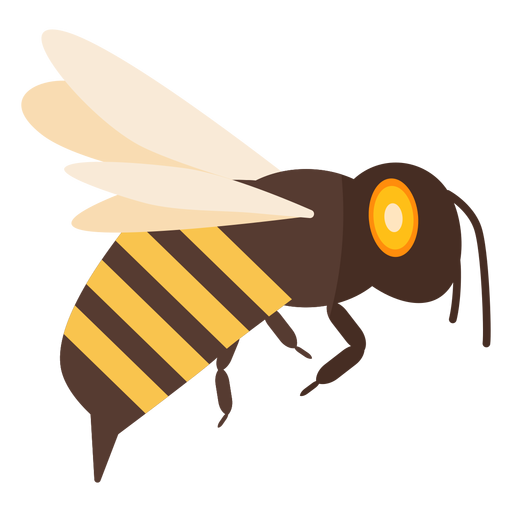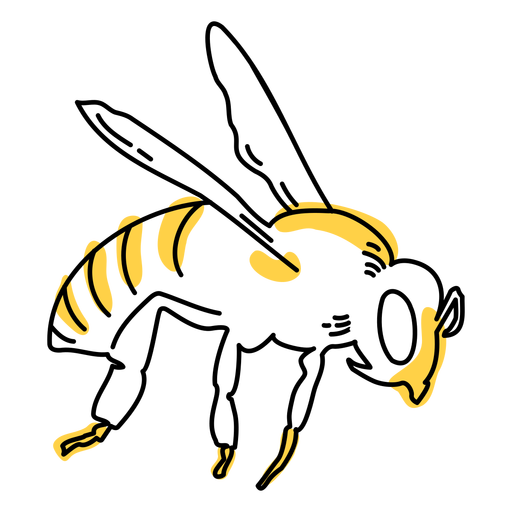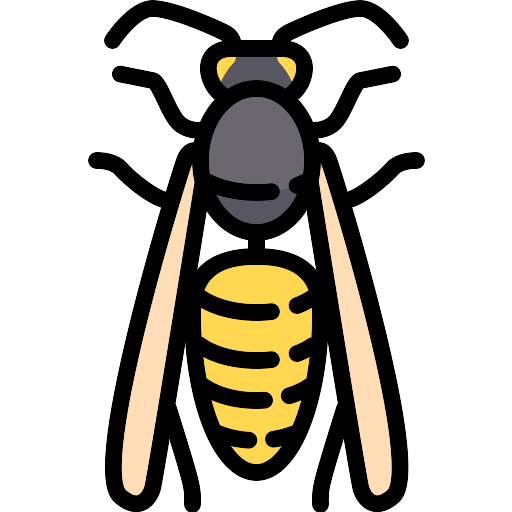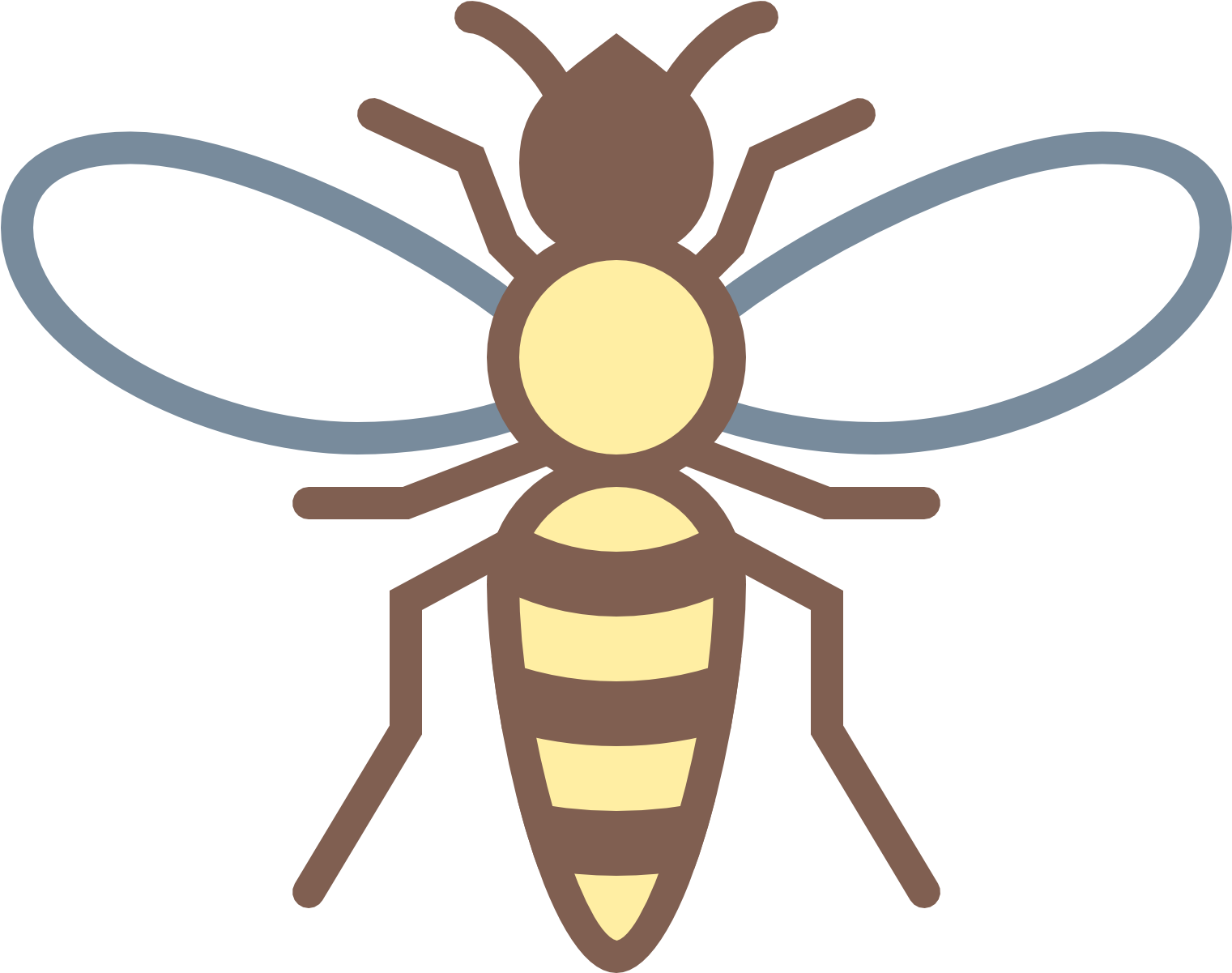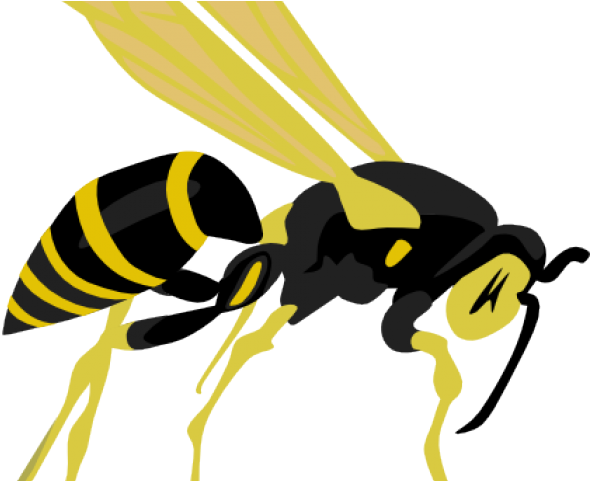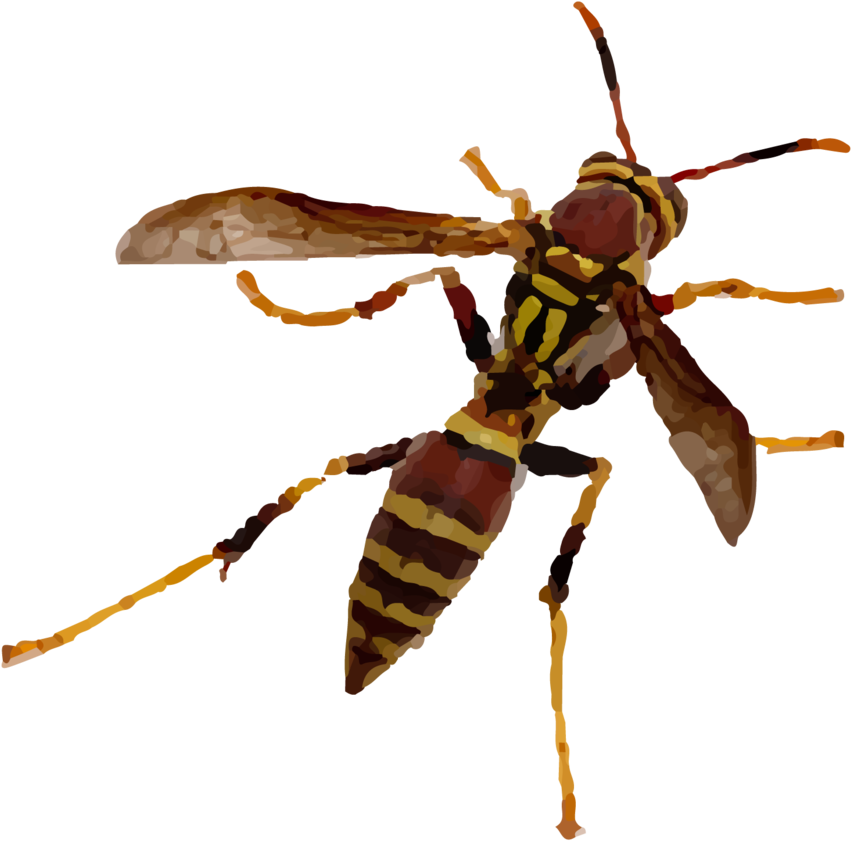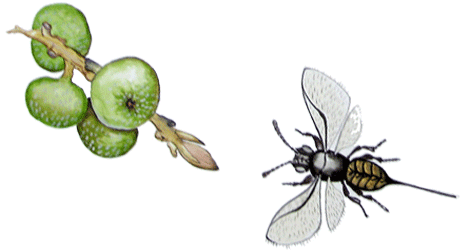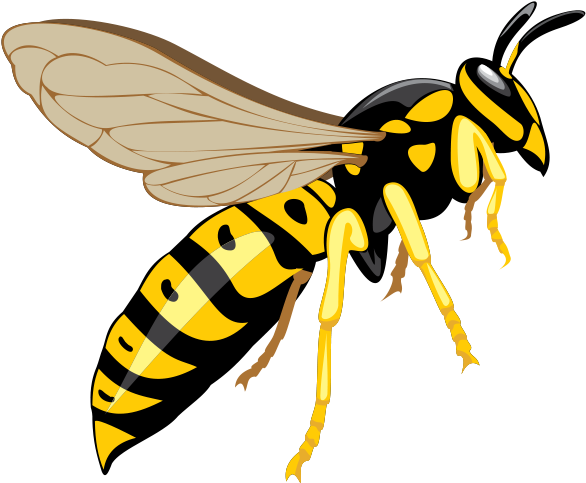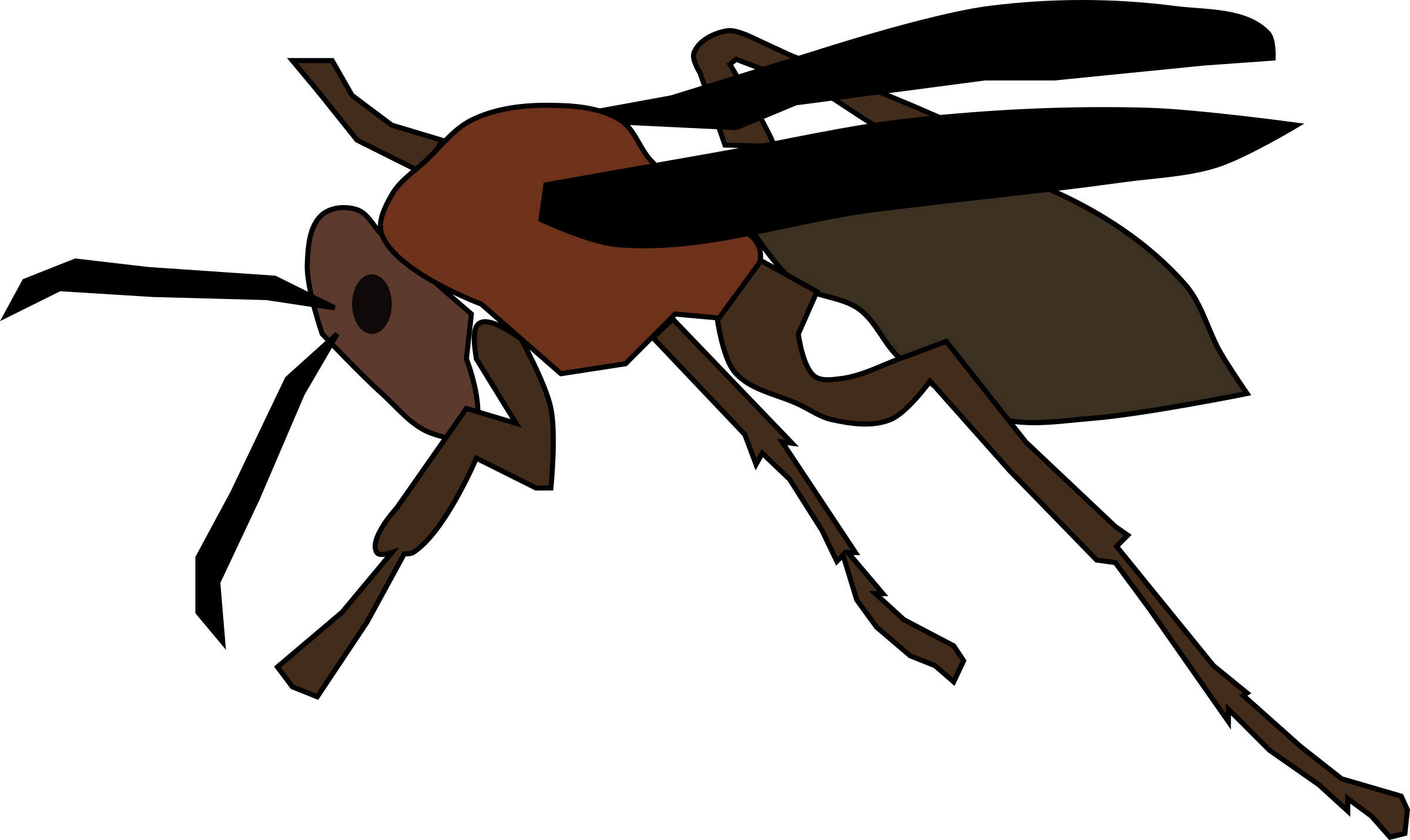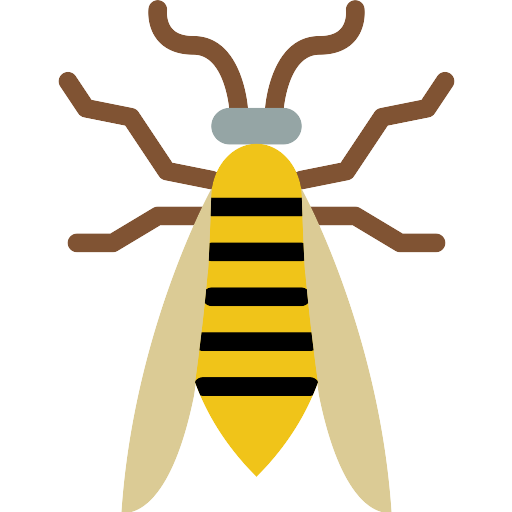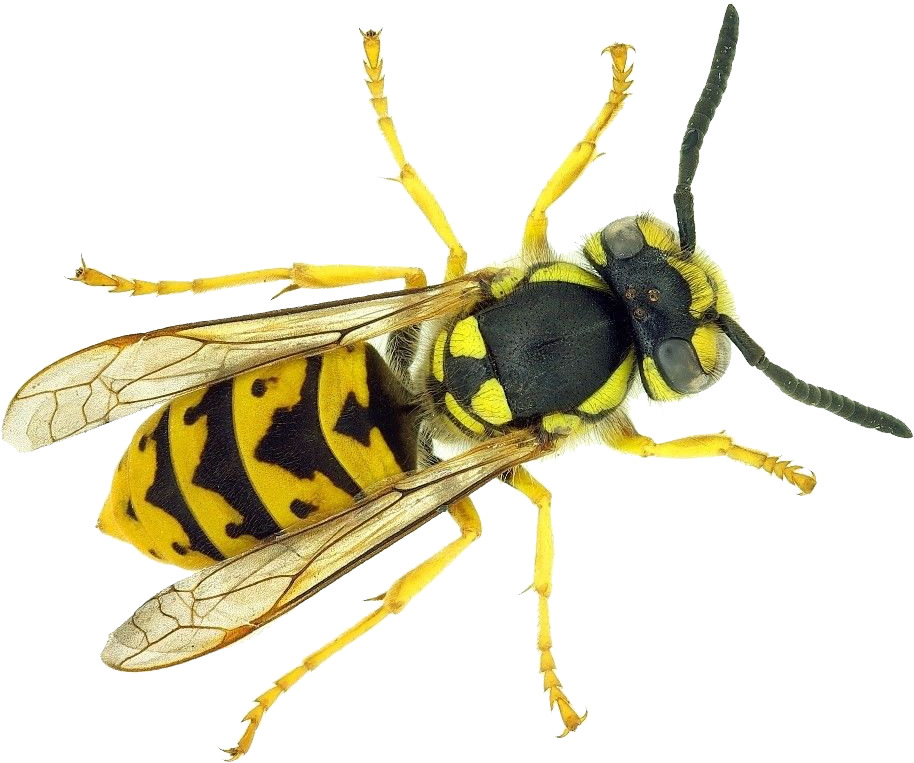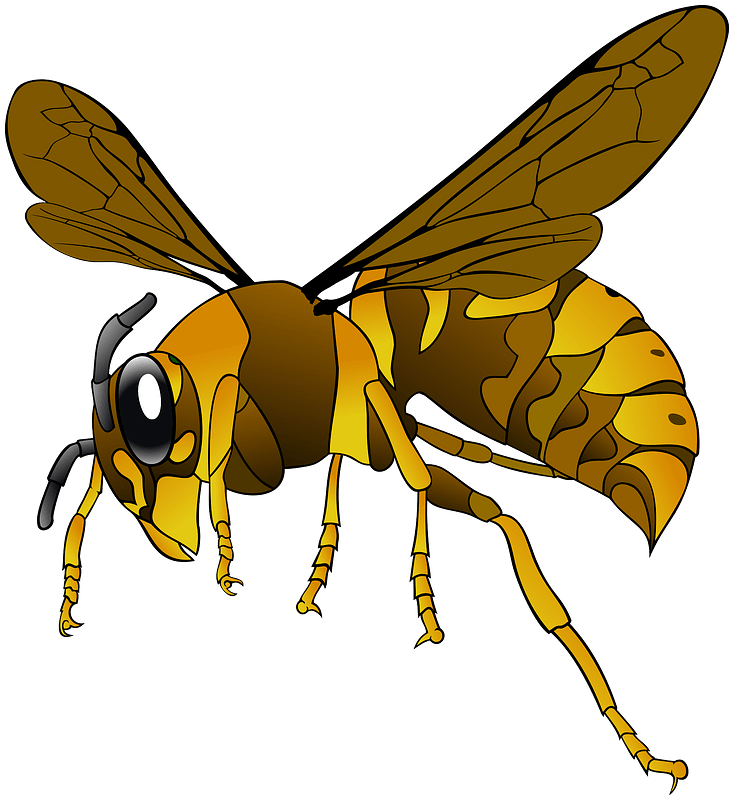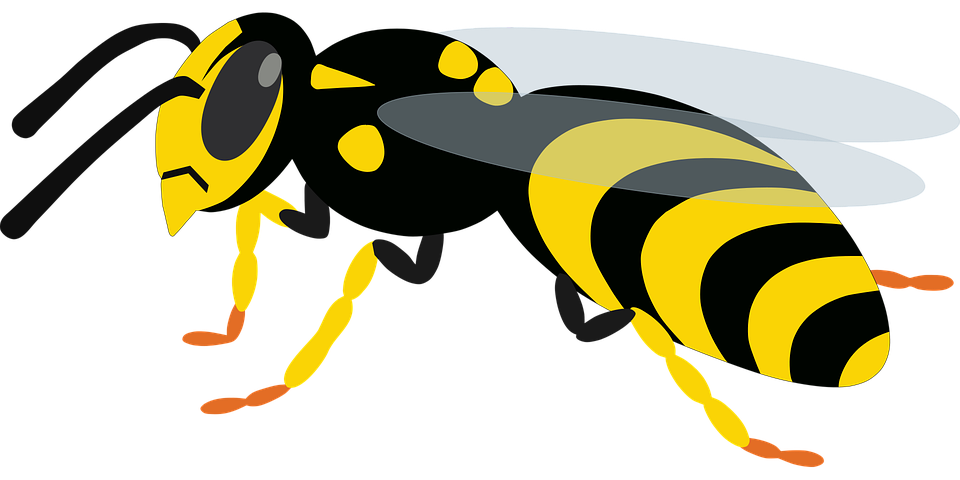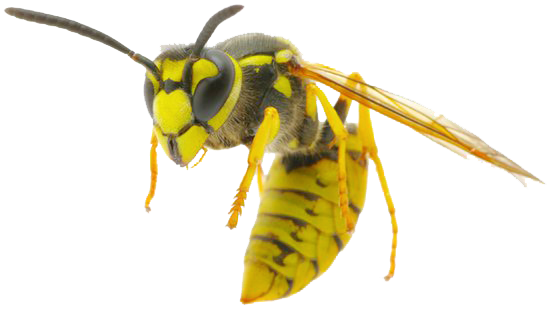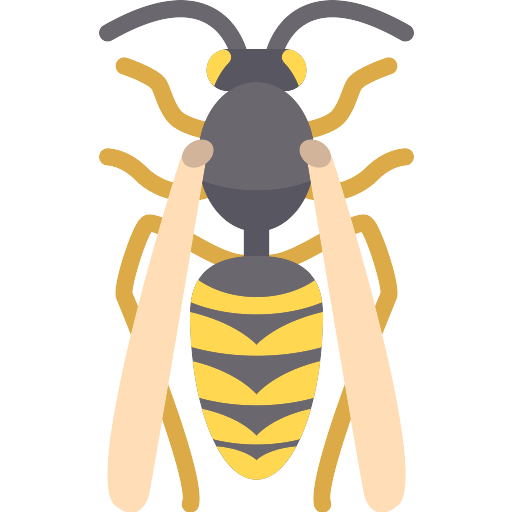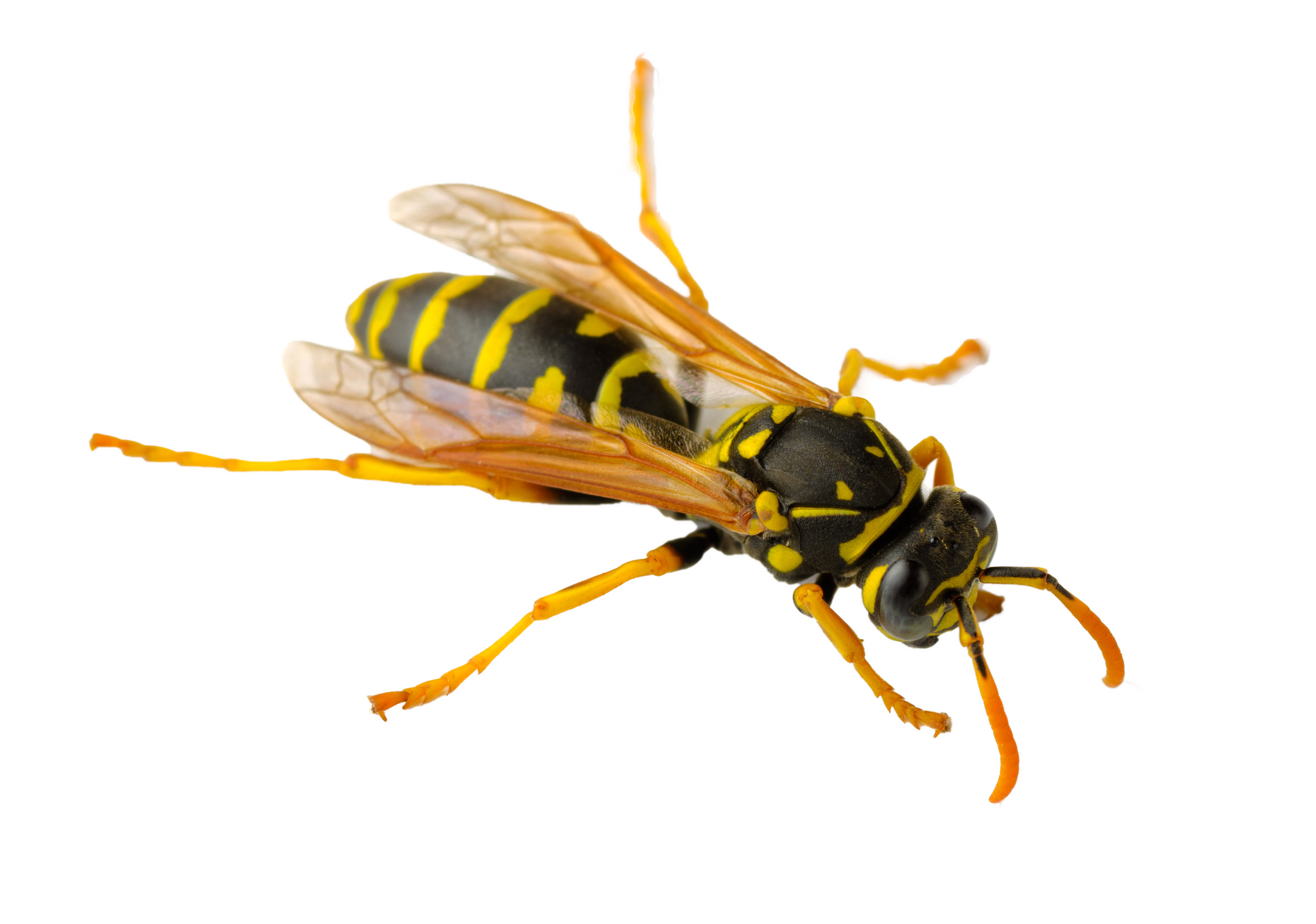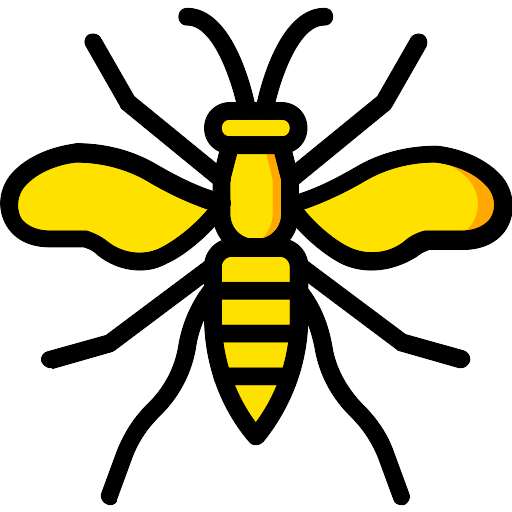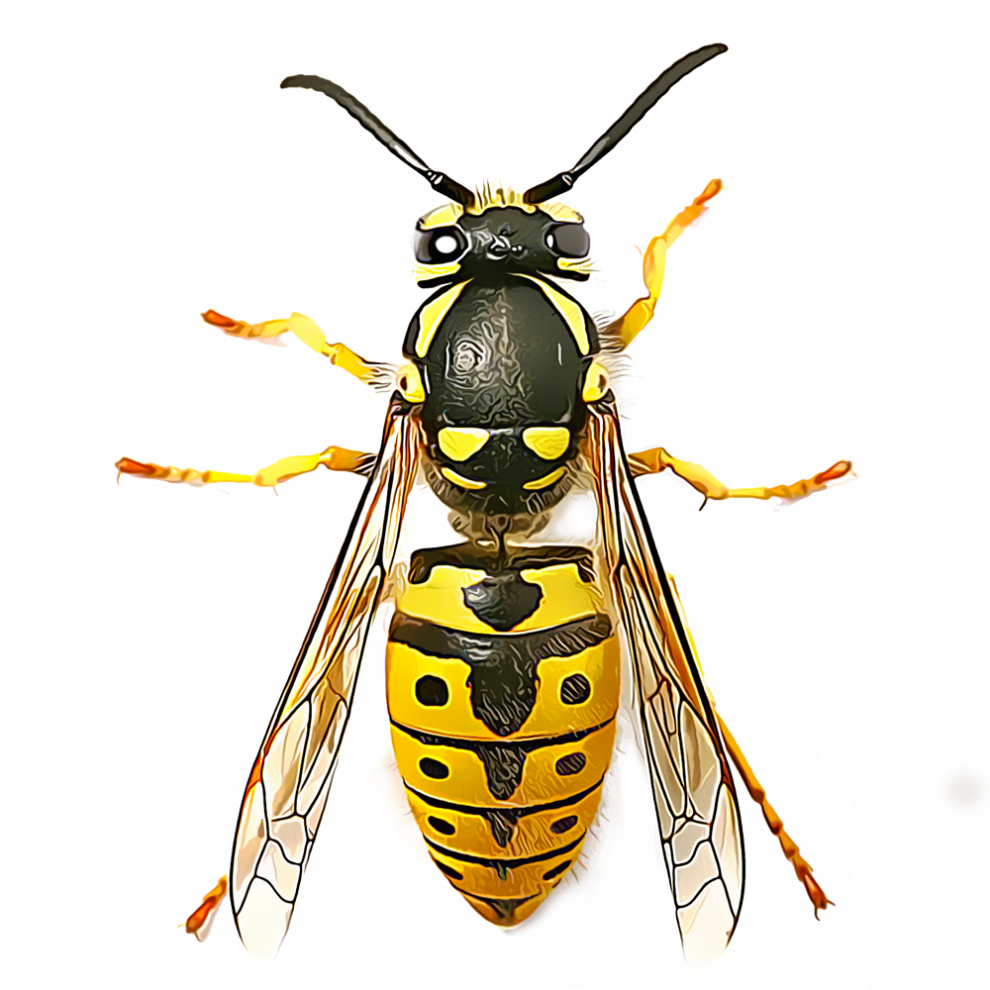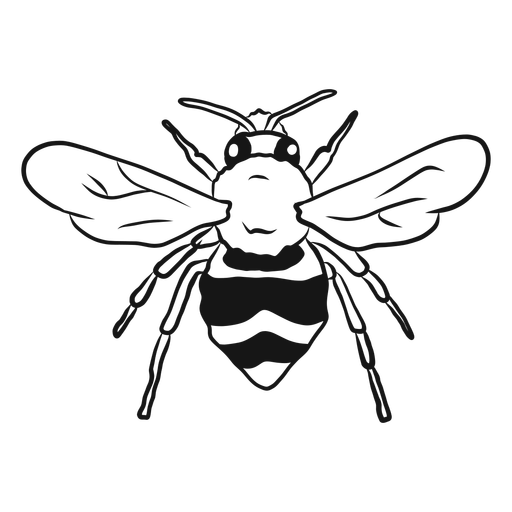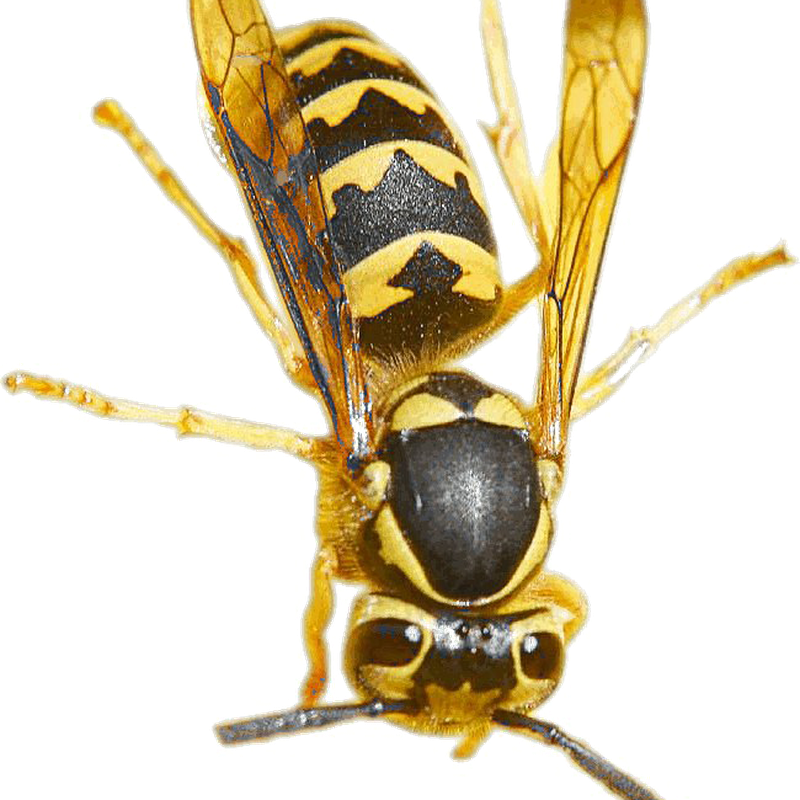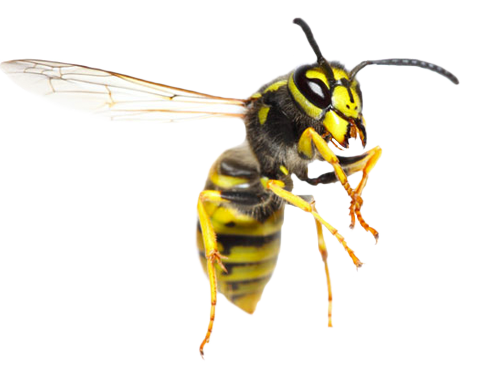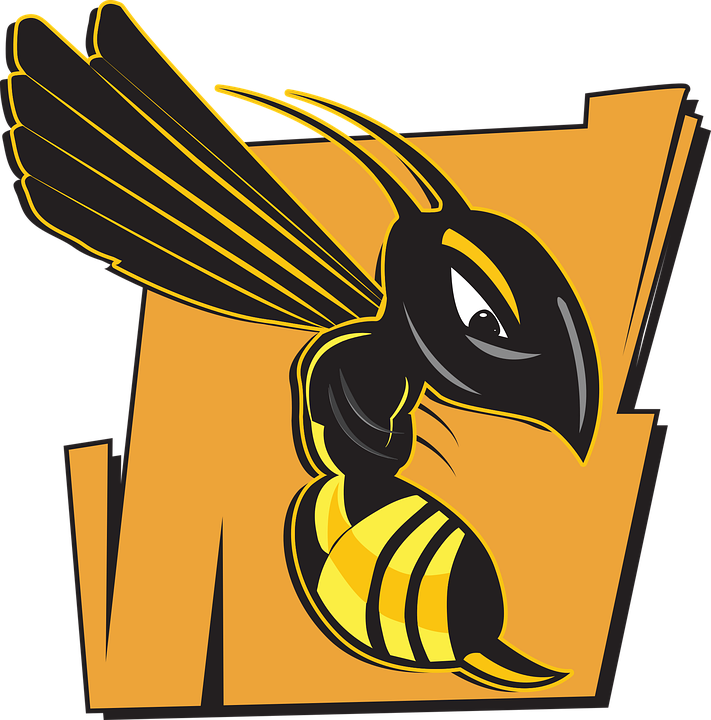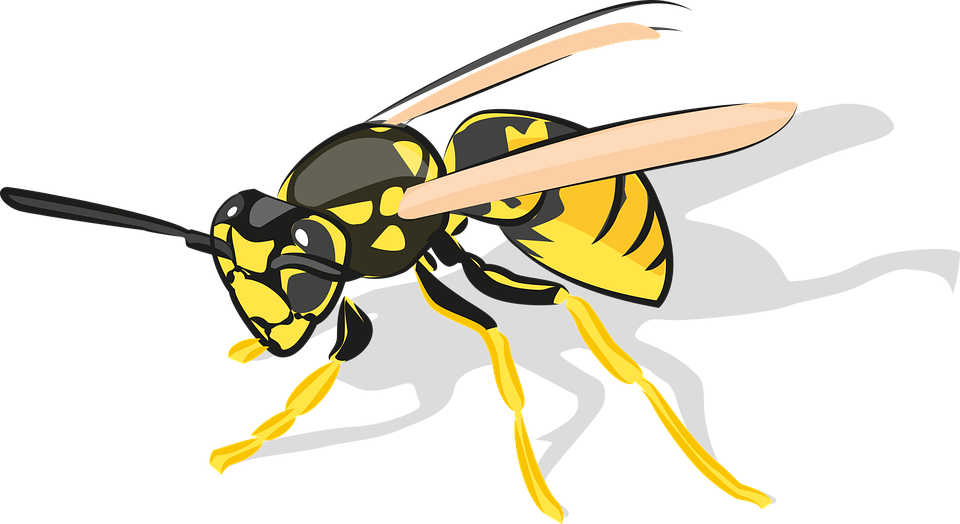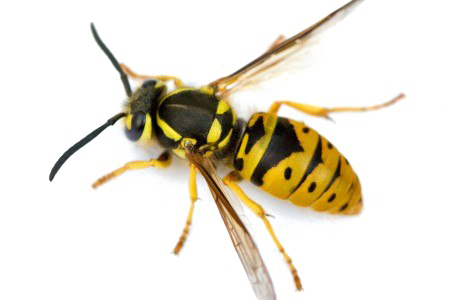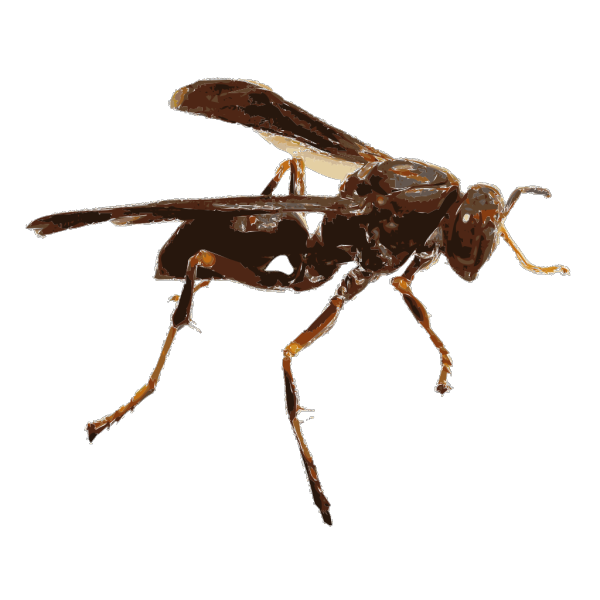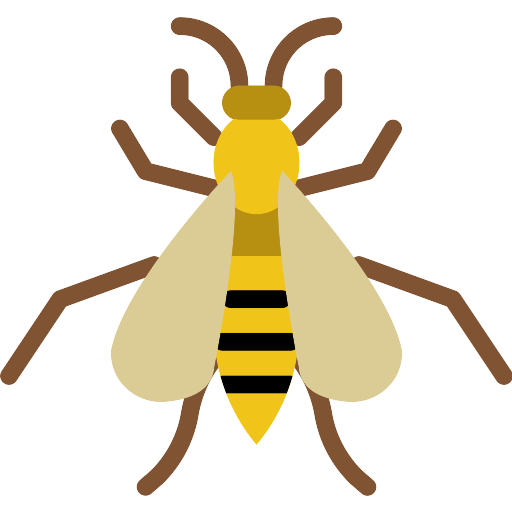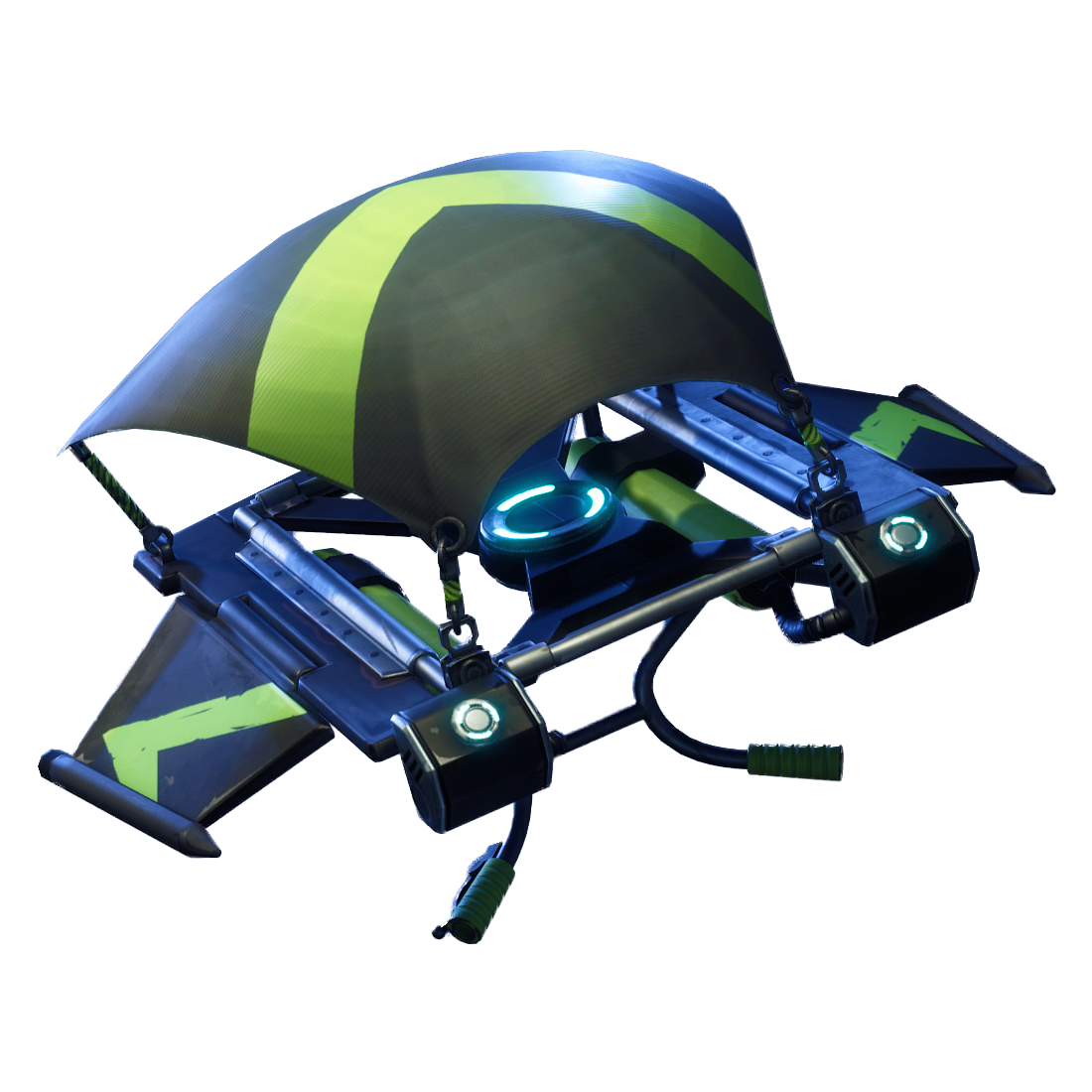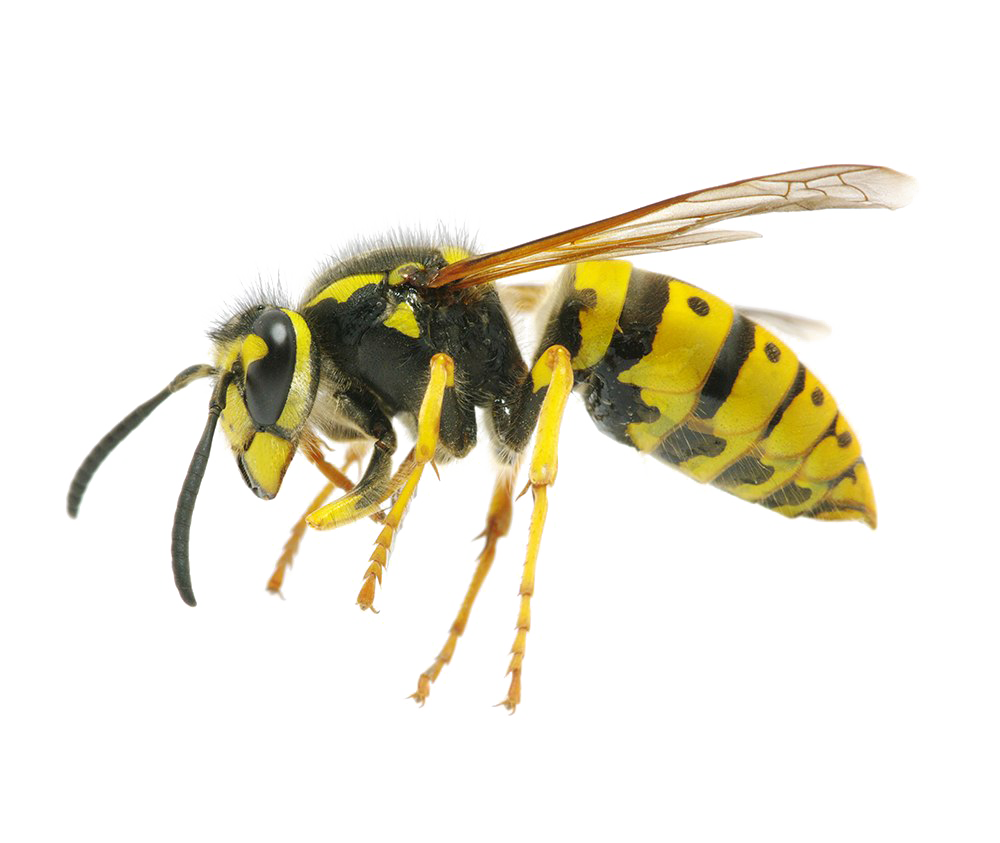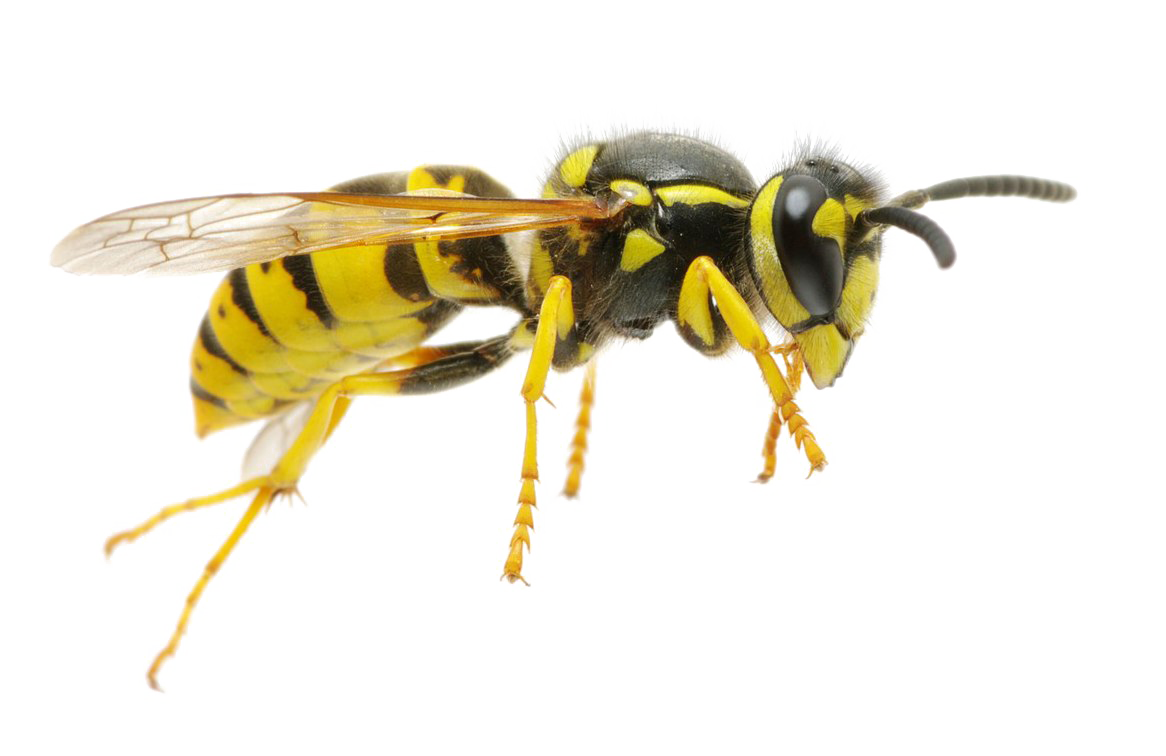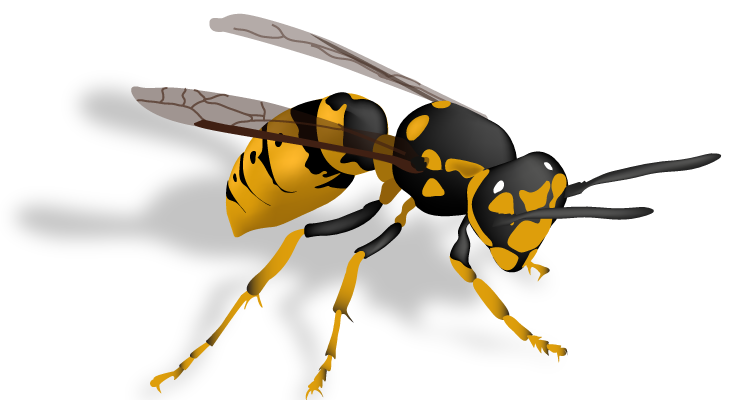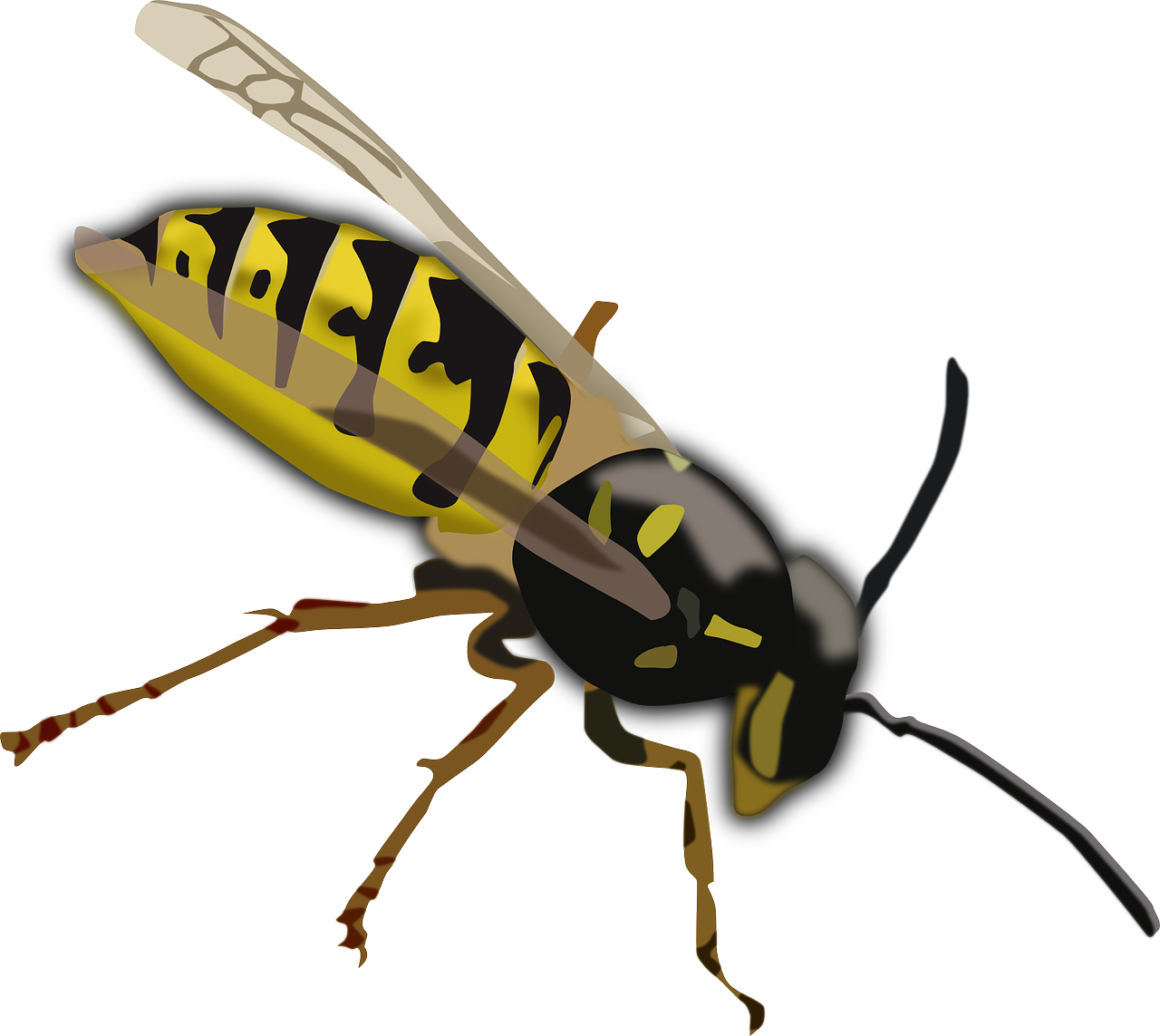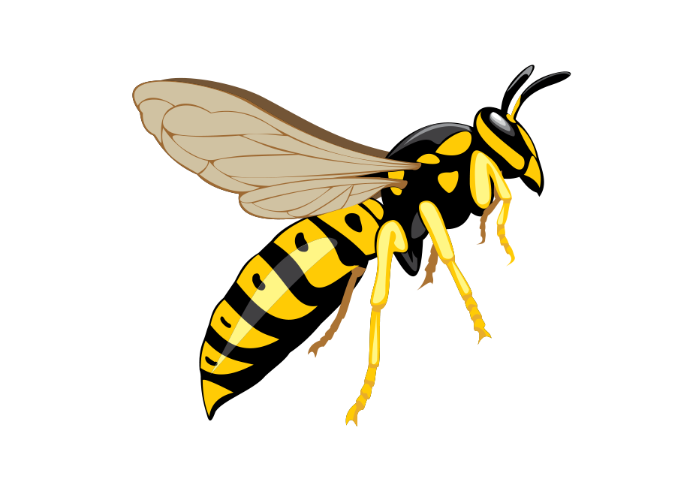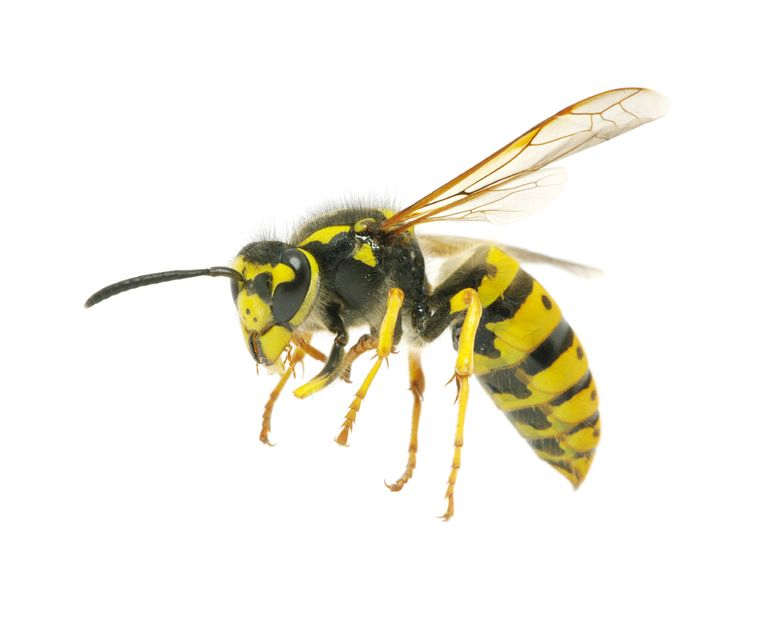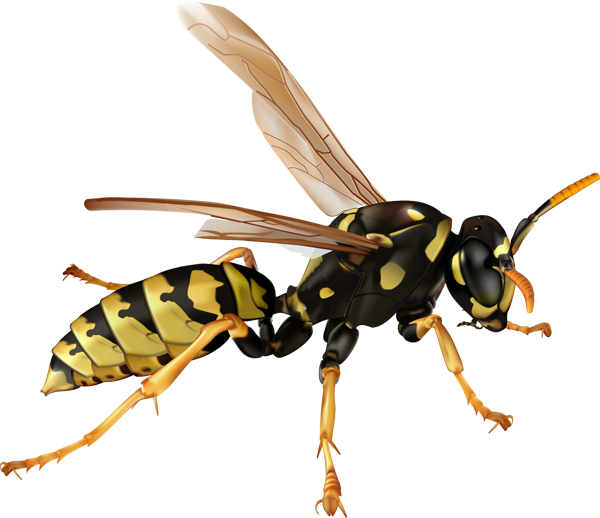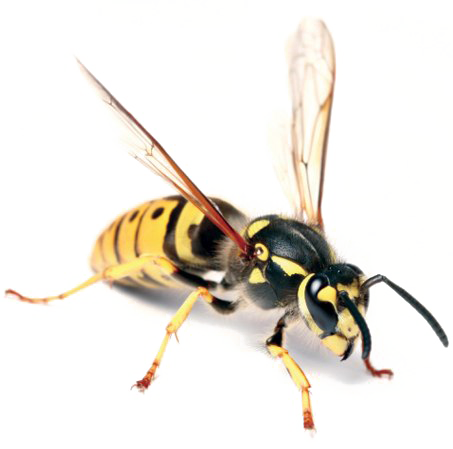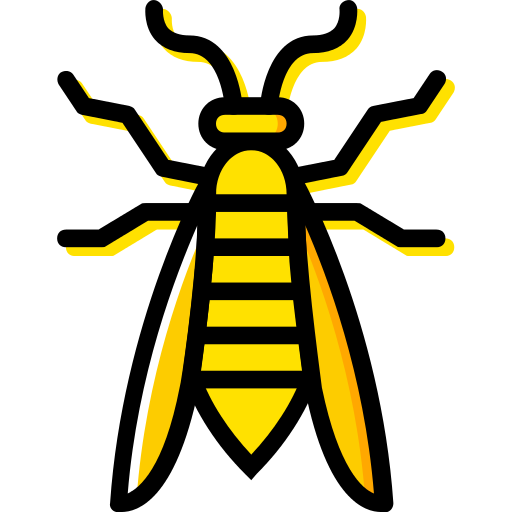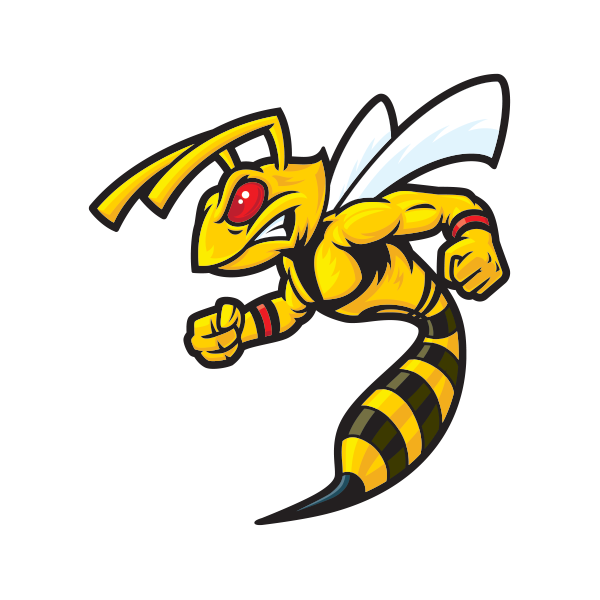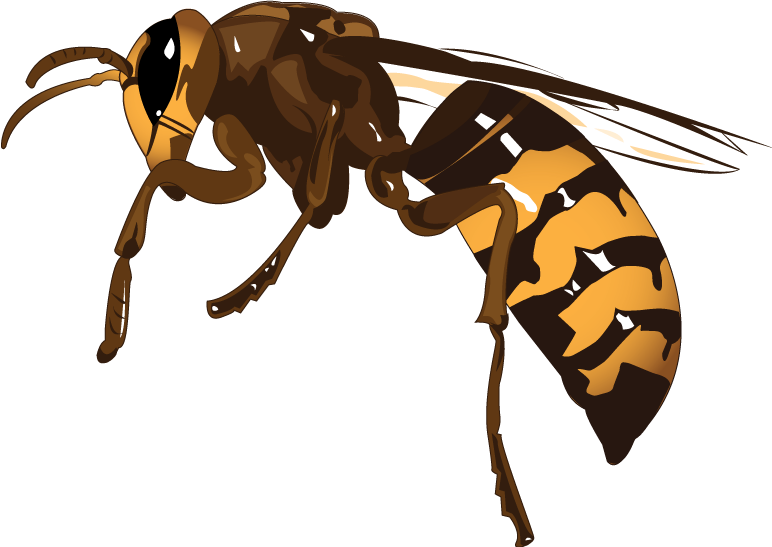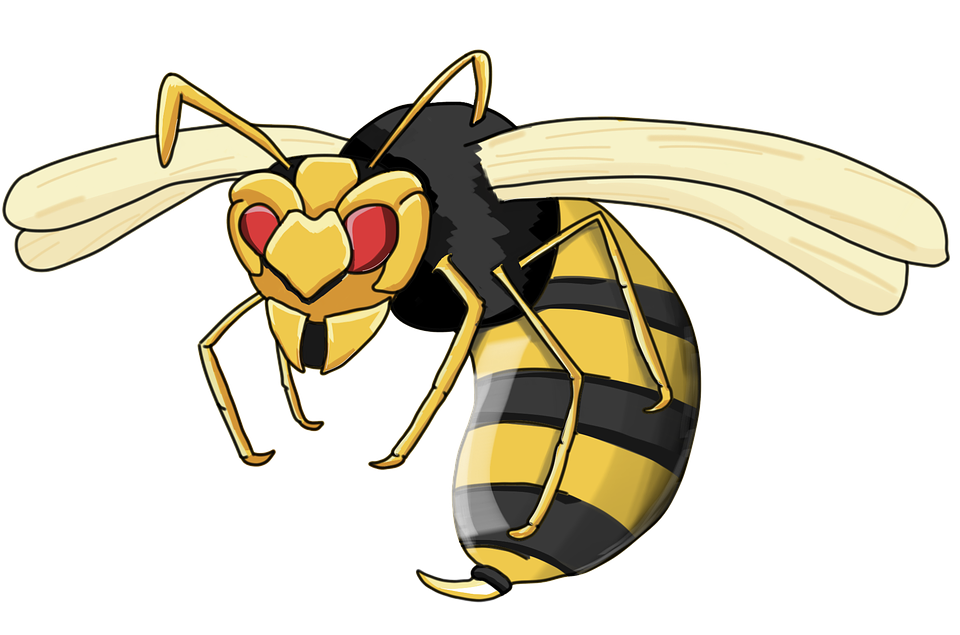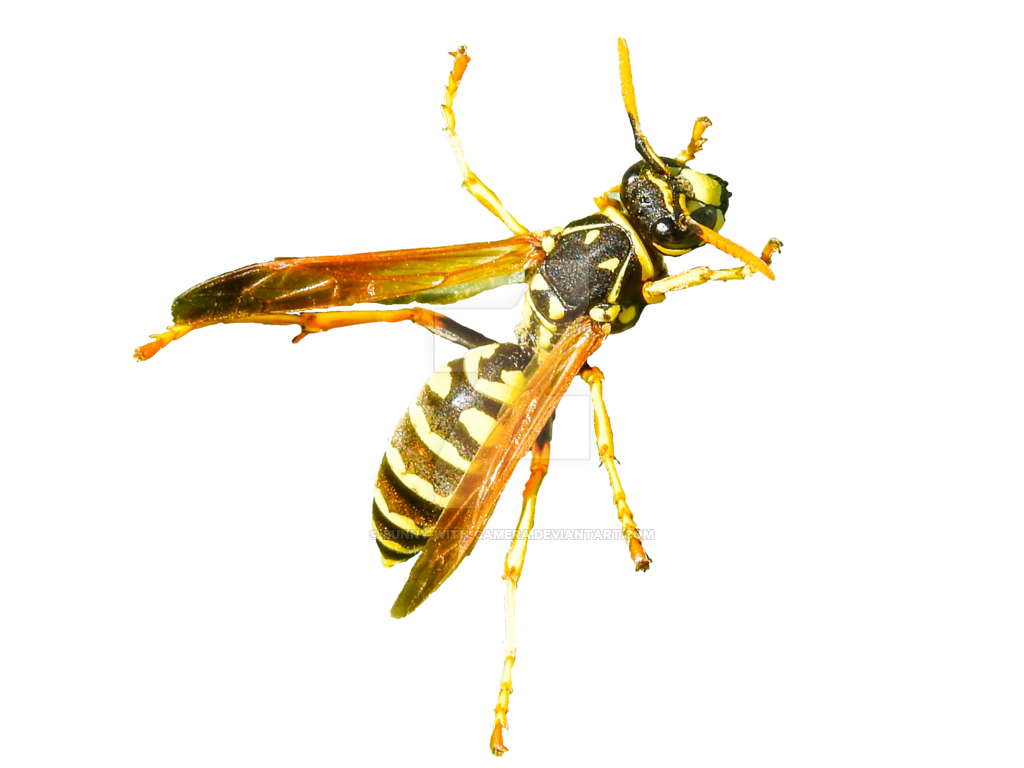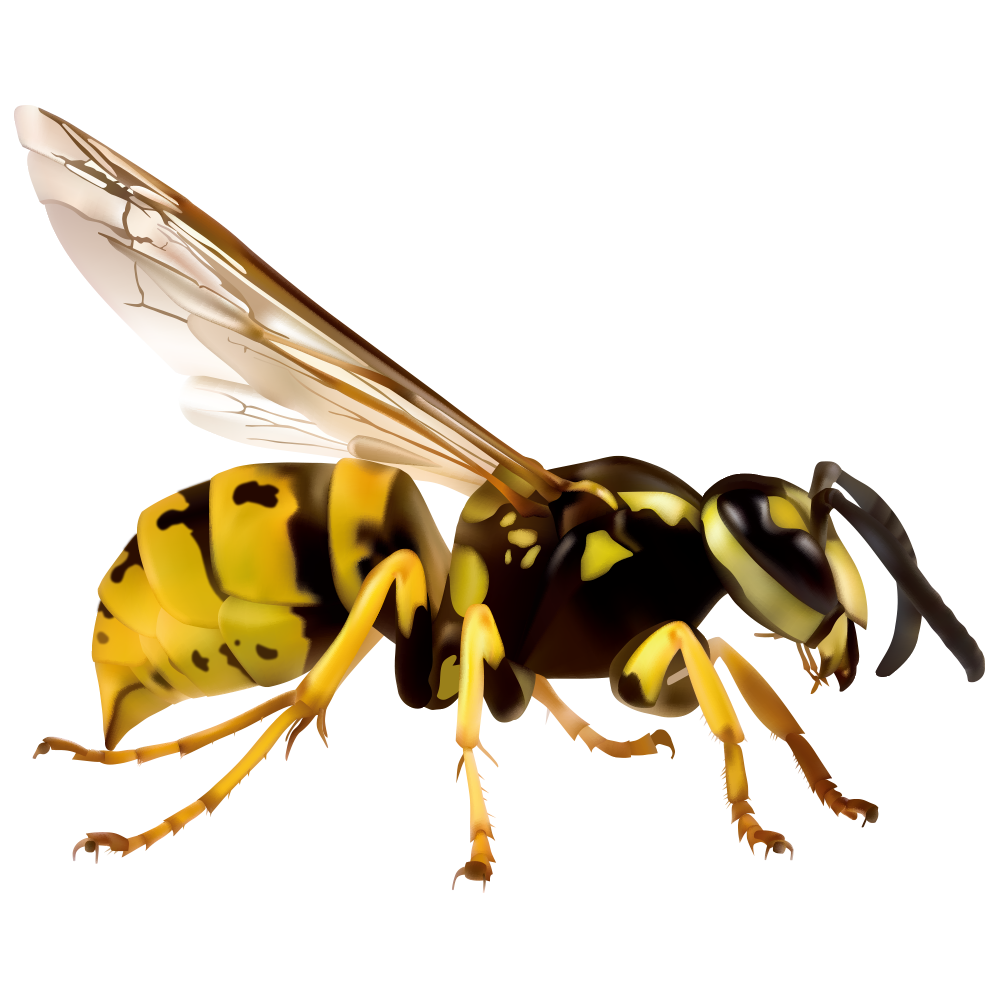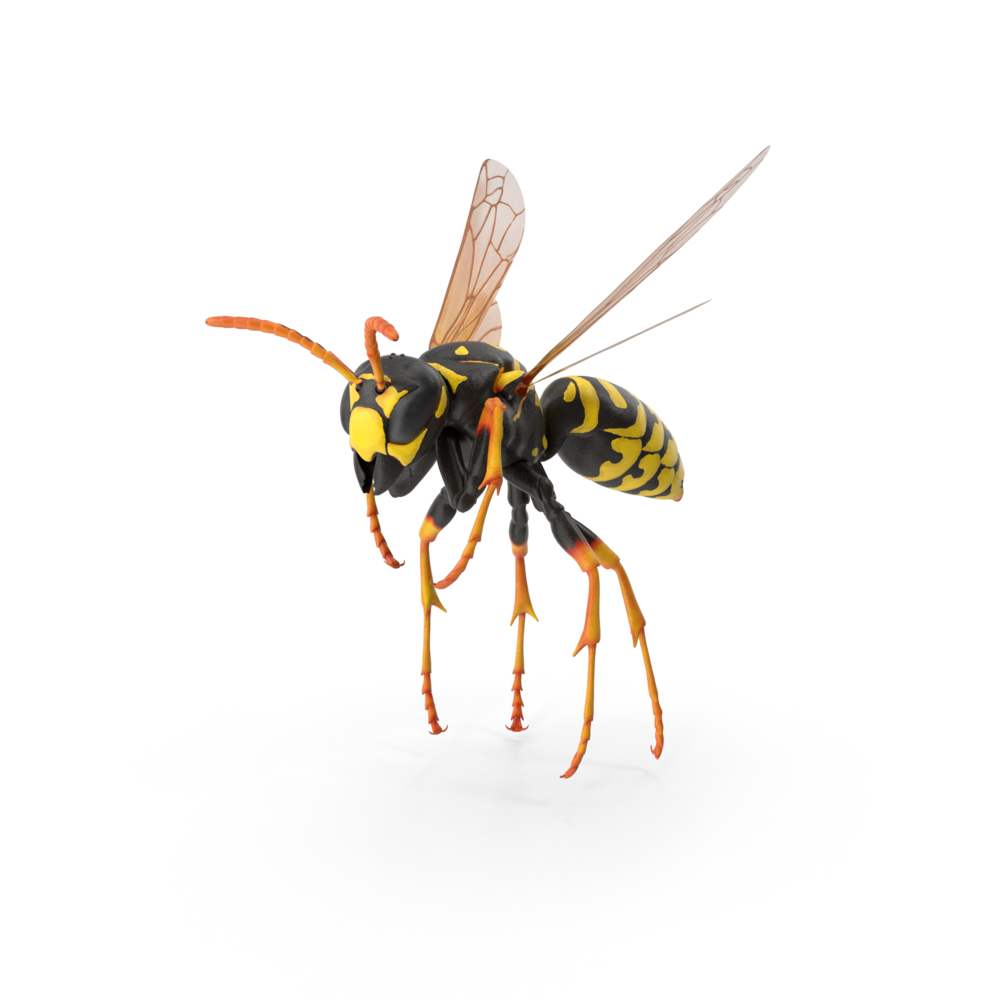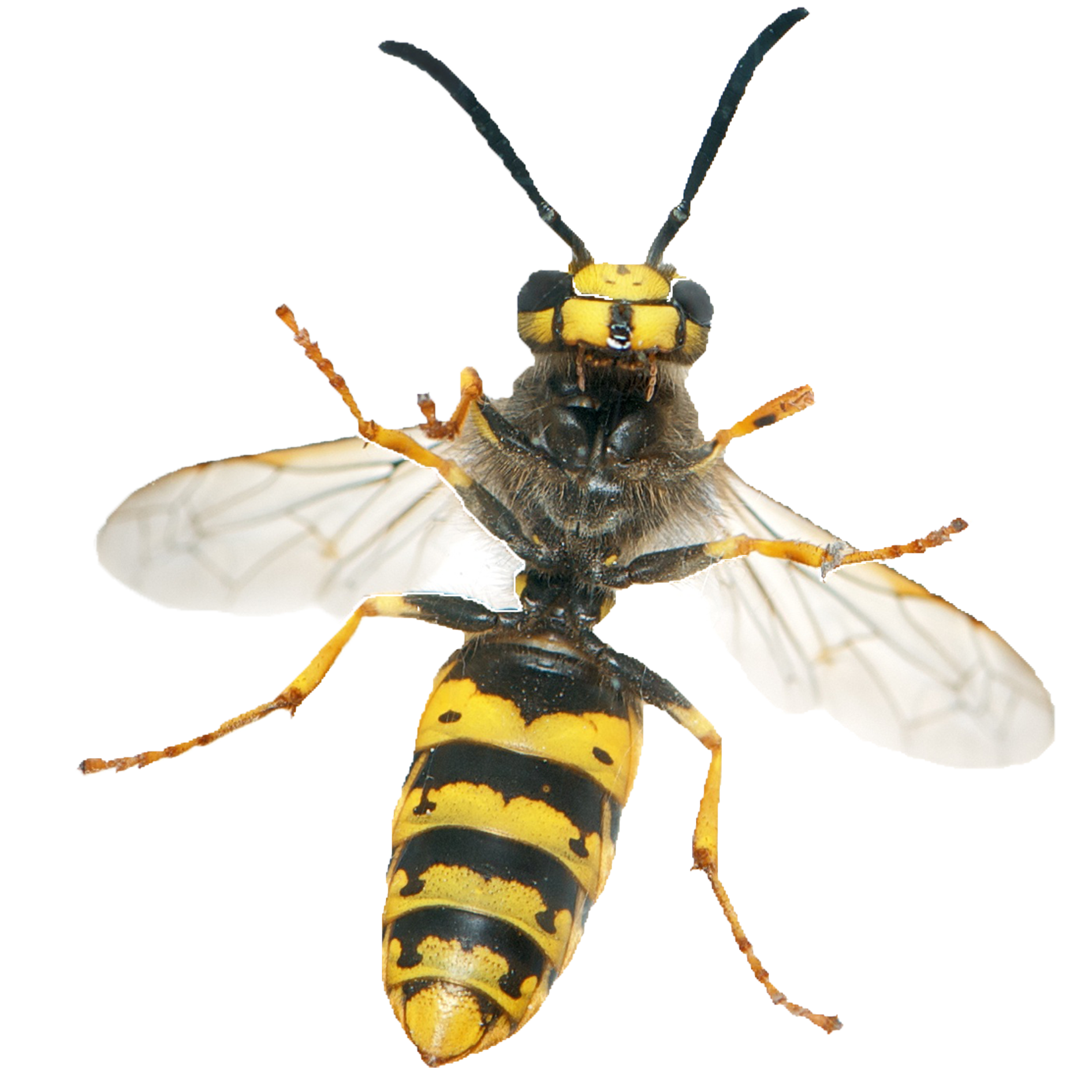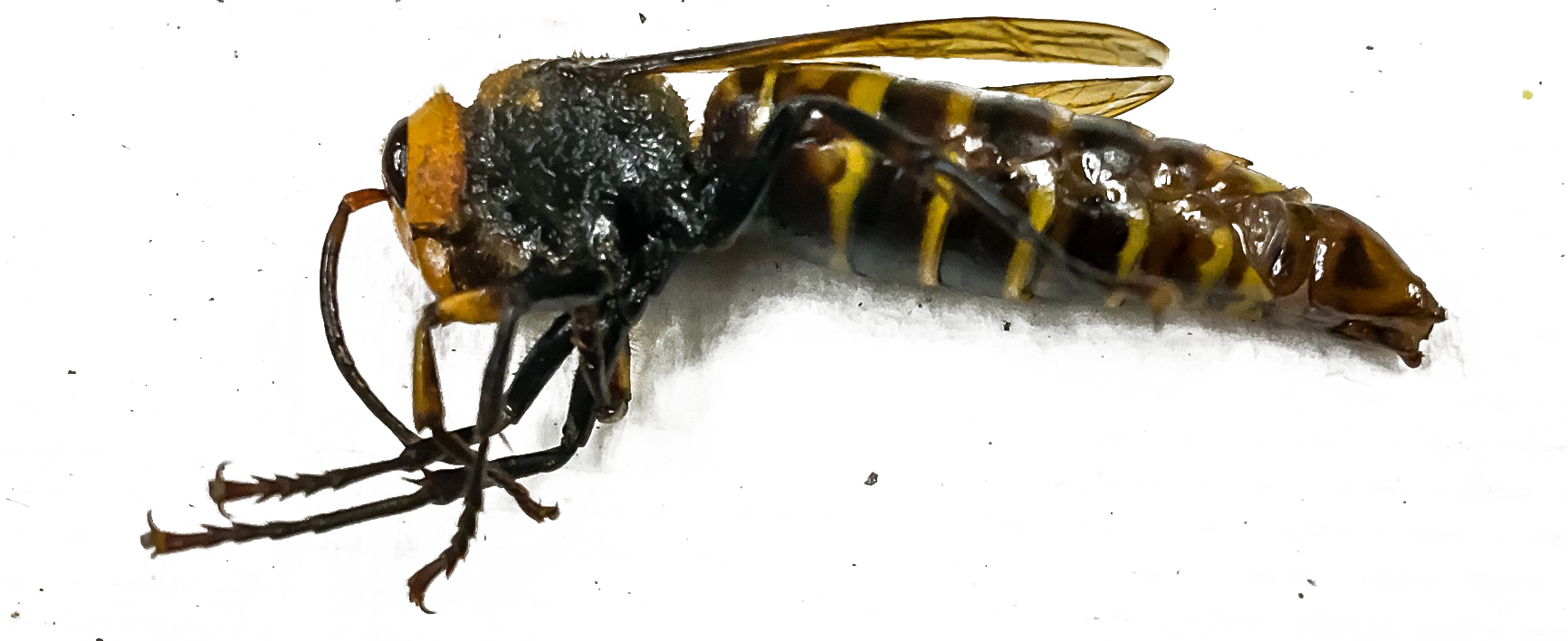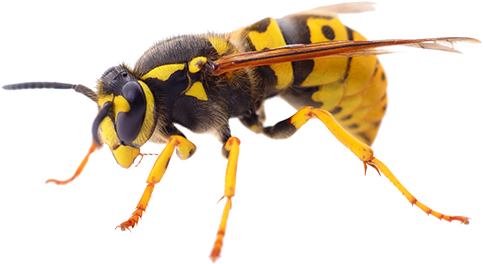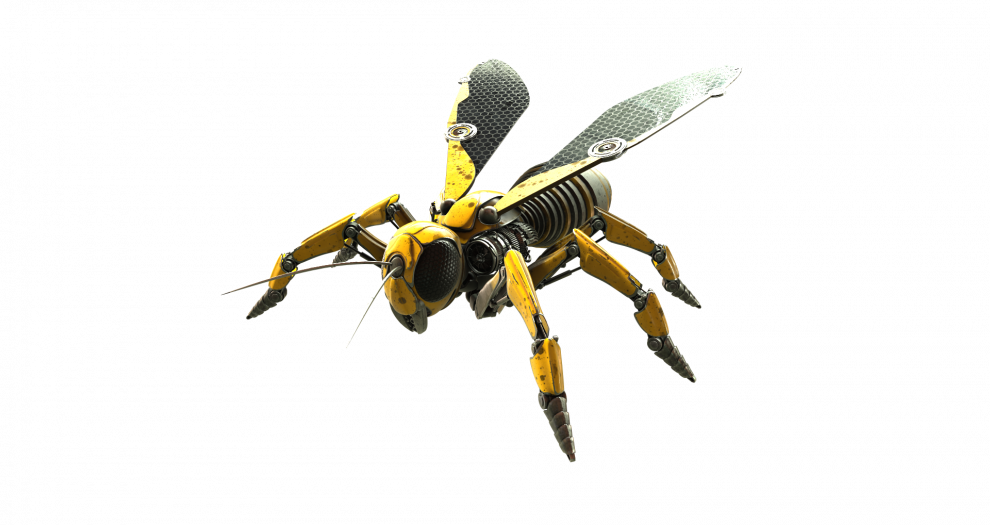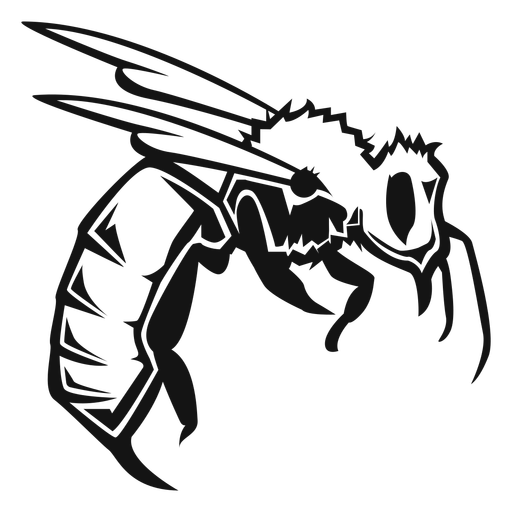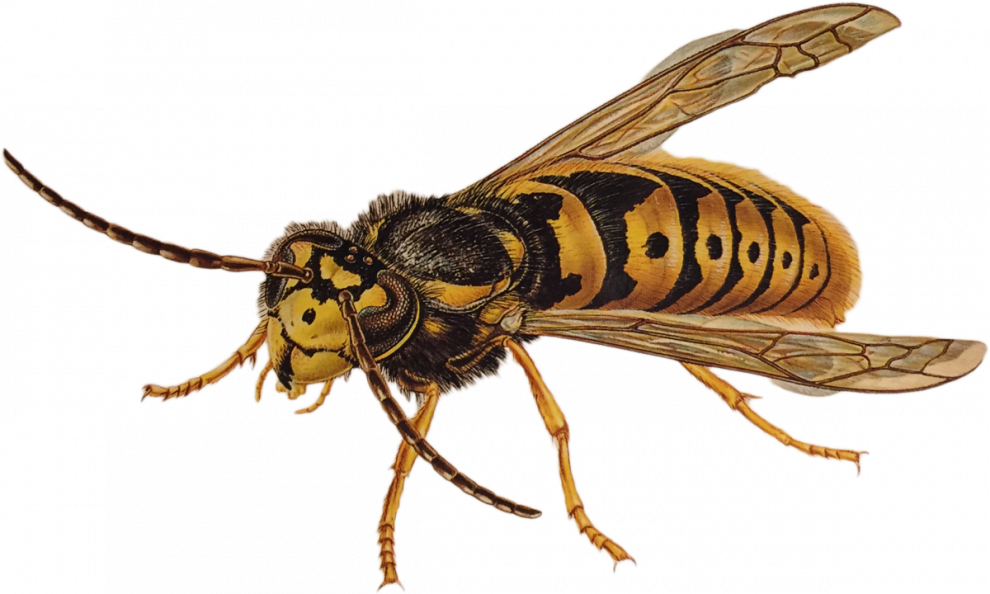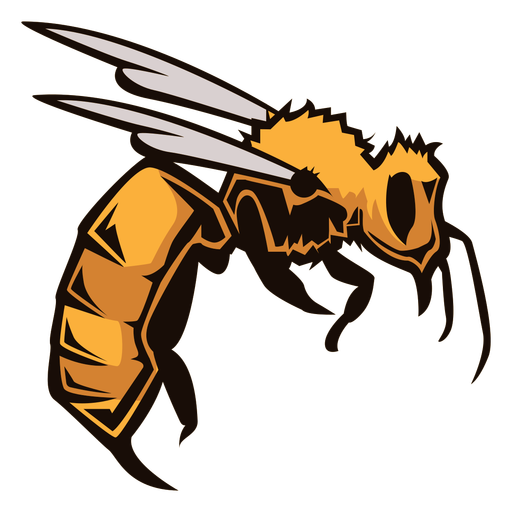Download top and best high-quality free Wasp PNG Transparent Images backgrounds available in various sizes. To view the full PNG size resolution click on any of the below image thumbnail.
License Info: Creative Commons 4.0 BY-NC
A wasp is any insect belonging to the narrow-waisted suborder Apocrita of the order Hymenoptera that is neither a bee nor an ant; this does not include broad-waisted sawflies, which resemble wasps but belong to a different suborder. Because their common ancestor is shared by bees and ants, wasps do not form a clade, or a complete natural group with a single ancestor. Many wasps in the group Aculeata have the ability to sting their insect prey.
Yellowjackets and hornets, for example, belong to the Vespidae family of wasps and are eusocial, living in a nest with an egg-laying queen and non-reproducing workers. The peculiar haplodiploid mechanism of sex determination in Hymenoptera favors eusociality because it allows sisters to be quite closely connected to one another. The majority of wasp species, on the other hand, are solitary, with each adult female living and reproducing on her own. Females usually have an ovipositor for depositing eggs in or near a food supply for the larvae, however the ovipositor of the Aculeata is frequently transformed into a sting employed for defense or prey capture. Wasps perform an important function in the environment. Some are predators or pollinators, depending on whether they need to feed themselves or their nests. The cuckoo wasp, for example, is a kleptoparasite, depositing eggs in the nests of other wasps. Many solitary wasps are parasitoids, which means they lay eggs on or in other insects (at any stage of development from egg to adult) and frequently use these insects to build their own nests. The wasp larvae, unlike real parasites, eventually kill their hosts. Solitary wasps feed on practically every nuisance bug, making them useful in agriculture for biological pest management of whitefly in tomatoes and other crops.
Wasps originally emerged in the Jurassic, and by the Cretaceous, they had evolved into several different superfamilies. Wasps have expanded to every section of the earth save the polar regions, and they are a successful and diversified group of insects with tens of thousands of identified species. The Asian giant hornet is the biggest social wasp, measuring up to 5 centimetres (2.0 in) in length; among the largest solitary wasps are the tarantula hawks, which include the enormous scoliid of Indonesia (Megascolia procer). The world’s smallest known insect, with a body length of only 0.139 mm (0.0055 in), and the smallest known flying insect, with a body length of just 0.15 mm (0.0059 in), are solitary chalcid wasps of the Mymaridae family.
Wasps first appeared in literature in Aristophanes’ 422 BC play The Wasps, as the titular chorus of old men, and in science fiction in H. G. Wells’ 1904 novel The Food of the Gods and How It Came to Earth, which featured enormous wasps with three-inch-long stings. Many warships and other military equipment have been dubbed “Wasp.”
Wasps are a varied group with well over a hundred thousand known species and many more still to be discovered throughout the world. For example, nearly every one of the 1000 tropical fig tree species has its own unique fig wasp (Chalcidoidea) that has evolved alongside it and pollinates it.
The females of many wasp species lay eggs on or in a host arthropod, which the larvae subsequently feed on. Some larvae begin their lives as parasitoids, but eventually evolve to consume the plant tissues that their hosts feed on. Other species lay their eggs directly into plant tissues, forming galls that protect the developing larvae from predators but not always from parasitic wasps. In certain species, the larvae are predatory as well; wasp eggs are set in clusters with other insects’ eggs, which are then devoured by the growing wasp larvae.
The Asian gigantic hornet is the biggest social wasp, measuring up to 5 centimetres (2.0 in) in length. With a sting that is incredibly painful to humans, the numerous tarantula hawk wasps can overpower a spider several times its own weight and take it to its lair. Megascolia procer, a single enormous scoliid with a wingspan of 11.5 cm, is a parasitoid of the Atlas beetle Chalcosoma atlas and has subspecies in Sumatra and Java. Megarhyssa macrurus, a female gigantic ichneumon wasp, is 12.5 centimetres (5 in) long, including its large but thin ovipositor, which is used to bore into wood and insert eggs. The tiniest wasps are solitary chalcid wasps of the Mymaridae family, which includes the world’s smallest known insect, Dicopomorpha echmepterygis (139 micrometres long), and Kikiki huna, the smallest known flying insect, with a body length of just 158 micrometres.
Download Wasp PNG images transparent gallery
- Wasp Hornet PNG Photo
Resolution: 512 × 512
Size: 57 KB
Image Format: .png
Download
- Wasp Hornet PNG Cutout
Resolution: 512 × 512
Size: 66 KB
Image Format: .png
Download
- Wasp Hornet PNG Images
Resolution: 600 × 600
Size: 40 KB
Image Format: .png
Download
- Wasp PNG Image
Resolution: 512 × 512
Size: 36 KB
Image Format: .png
Download
- Wasp Queen
Resolution: 1521 × 1201
Size: 78 KB
Image Format: .png
Download
- Wasp PNG Photo
Resolution: 640 × 480
Size: 64 KB
Image Format: .png
Download
- Wasp Queen PNG
Resolution: 590 × 481
Size: 105 KB
Image Format: .png
Download
- Wasp PNG Cutout
Resolution: 851 × 841
Size: 142 KB
Image Format: .png
Download
- Wasp PNG Images
Resolution: 460 × 251
Size: 39 KB
Image Format: .png
Download
- Wasp PNG Photos
Resolution: 586 × 483
Size: 64 KB
Image Format: .png
Download
- Wasp Transparent
Resolution: 2400 × 1430
Size: 136 KB
Image Format: .png
Download
- Wasp PNG Clipart
Resolution: 512 × 512
Size: 19 KB
Image Format: .png
Download
- Wasp PNG Picture
Resolution: 914 × 763
Size: 606 KB
Image Format: .png
Download
- Wasp Bee
Resolution: 734 × 800
Size: 83 KB
Image Format: .png
Download
- Wasp Bee PNG
Resolution: 960 × 480
Size: 121 KB
Image Format: .png
Download
- Wasp Bee PNG Pic
Resolution: 555 × 317
Size: 121 KB
Image Format: .png
Download
- Wasp Bee PNG File
Resolution: 512 × 512
Size: 38 KB
Image Format: .png
Download
- Wasp Bee PNG Image
Resolution: 3000 × 2106
Size: 1974 KB
Image Format: .png
Download
- Wasp Bee PNG Photo
Resolution: 512 × 512
Size: 25 KB
Image Format: .png
Download
- Wasp Bee PNG Cutout
Resolution: 990 × 990
Size: 872 KB
Image Format: .png
Download
- Wasp Queen PNG Pic
Resolution: 990 × 743
Size: 479 KB
Image Format: .png
Download
- Wasp PNG HD Image
Resolution: 512 × 512
Size: 247 KB
Image Format: .png
Download
- Wasp PNG Image HD
Resolution: 800 × 800
Size: 659 KB
Image Format: .png
Download
- Wasp No Background
Resolution: 495 × 367
Size: 103 KB
Image Format: .png
Download
- Wasp PNG Images HD
Resolution: 711 × 720
Size: 247 KB
Image Format: .png
Download
- Wasp PNG Free Image
Resolution: 960 × 524
Size: 180 KB
Image Format: .png
Download
- Wasp Bee PNG Images
Resolution: 460 × 300
Size: 116 KB
Image Format: .png
Download
- Wasp Bee PNG Photos
Resolution: 600 × 600
Size: 112 KB
Image Format: .png
Download
- Wasp Bee Transparent
Resolution: 512 × 512
Size: 22 KB
Image Format: .png
Download
- Wasp PNG Image File
Resolution: 1100 × 1100
Size: 678 KB
Image Format: .png
Download
- Wasp Queen PNG File
Resolution: 1000 × 843
Size: 443 KB
Image Format: .png
Download
- Wasp Queen PNG Image
Resolution: 1166 × 756
Size: 422 KB
Image Format: .png
Download
- Wasp Bee PNG Clipart
Resolution: 730 × 400
Size: 77 KB
Image Format: .png
Download
- Wasp Bee PNG Picture
Resolution: 1280 × 1143
Size: 405 KB
Image Format: .png
Download
- Wasp Bee PNG HD Image
Resolution: 685 × 482
Size: 82 KB
Image Format: .png
Download
- Wasp Bee PNG Image HD
Resolution: 764 × 627
Size: 231 KB
Image Format: .png
Download
- Wasp Bee No Background
Resolution: 600 × 518
Size: 180 KB
Image Format: .png
Download
- Wasp Hornet
Resolution: 724 × 641
Size: 410 KB
Image Format: .png
Download
- Wasp Hornet PNG Image
Resolution: 453 × 449
Size: 142 KB
Image Format: .png
Download
- Wasp Hornet PNG Photos
Resolution: 512 × 512
Size: 26 KB
Image Format: .png
Download
- Wasp Hornet Transparent
Resolution: 600 × 600
Size: 78 KB
Image Format: .png
Download
- Wasp Hornet PNG Clipart
Resolution: 772 × 547
Size: 89 KB
Image Format: .png
Download
- Wasp Hornet PNG Picture
Resolution: 960 × 635
Size: 317 KB
Image Format: .png
Download
- Wasp Hornet PNG HD Image
Resolution: 1024 × 768
Size: 268 KB
Image Format: .png
Download
- Wasp Hornet PNG Image HD
Resolution: 1000 × 1000
Size: 409 KB
Image Format: .png
Download
- Wasp Hornet No Background
Resolution: 1000 × 1000
Size: 1108 KB
Image Format: .png
Download
- Wasp Hornet PNG
Resolution: 1891 × 1891
Size: 1577 KB
Image Format: .png
Download
- Wasp Hornet PNG Pic
Resolution: 1732 × 708
Size: 971 KB
Image Format: .png
Download
- Wasp
Resolution: 483 × 264
Size: 126 KB
Image Format: .png
Download
- Wasp PNG
Resolution: 990 × 525
Size: 213 KB
Image Format: .png
Download
- Wasp PNG Pic
Resolution: 512 × 512
Size: 66 KB
Image Format: .png
Download
- Wasp PNG File
Resolution: 990 × 594
Size: 514 KB
Image Format: .png
Download
- Wasp Hornet PNG File
Resolution: 512 × 512
Size: 119 KB
Image Format: .png
Download
